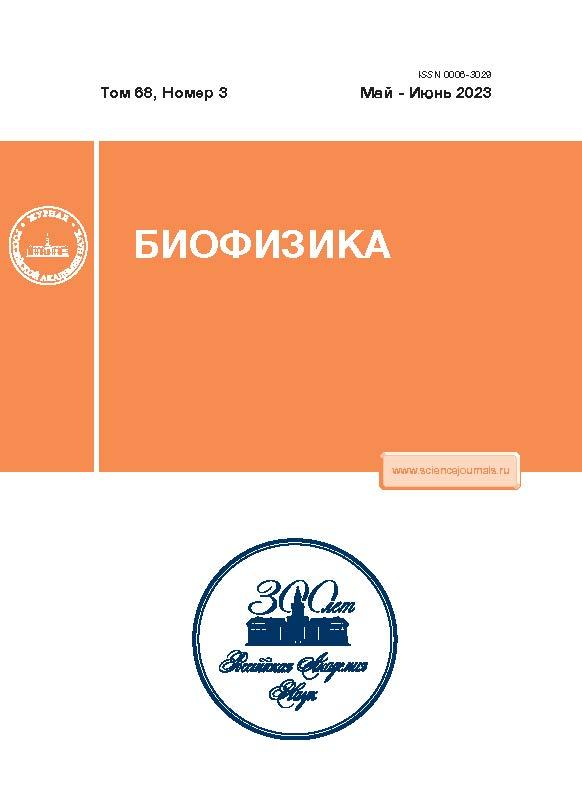Dinitrosyl iron complexes with thiol-containing ligands as sources of universal cytotoxins - nitrosonium cations
- Autores: Vanin A.F1, Tkachev N.A1
-
Afiliações:
- N.N. Semenov Federal Research Center for Chemical Physics
- Edição: Volume 68, Nº 3 (2023)
- Páginas: 421-434
- Seção: Articles
- URL: https://vietnamjournal.ru/0006-3029/article/view/673464
- DOI: https://doi.org/10.31857/S0006302923030018
- EDN: https://elibrary.ru/FPGKAY
- ID: 673464
Citar
Texto integral
Resumo
It was shown that the release of a half of nitrosyl ligands from dinitrosyl iron units in the form of nitrosonium cation (NO+) from binuclear dinitrosyl iron complexes with thiol-containing ligands (B-DNIC) during DNIC decomposition in acid solutions is increased with the decrease of the stability of these complexes and completely blocked with the increase of the concentrations of free thiols (non-included into B-DNIC) up to the level that was two times and more than that of dinitrosyl iron units. It was demonstrated that the less stable B-DNIC with mercaptosuccinate degrade in an acidic environment at ambient temperature, while the decomposition of more stable B-DNIC with glutathione was only marked when the solution was heated at 80°C. The inhibition of NO+ release from B-DNIC in the presence of elevated free thiol level in the solution was due to the ability of free thiols to induce the reduction of NO+ to NO.
Palavras-chave
Sobre autores
A. Vanin
N.N. Semenov Federal Research Center for Chemical Physics
Email: vanin.dnic@gmail.com
Moscow, Russia
N. Tkachev
N.N. Semenov Federal Research Center for Chemical PhysicsMoscow, Russia
Bibliografia
- T.-T. Lu, Y.-M. Wang, C.-H. Hung, et al., Inorg. Chem., 57, 12425 (2018).
- S.-L. Cho, C.-J. Liao, and T.-T. Lu, J. Biol. Inorg. Chem., 24, 495 (2019).
- N. Lehnert, E. Kim, H.T. Dong, et al., Chem. Rev., 121, 14682 (2021).
- A. F. Vanin, Dinitrosyl iron complexes as a "working form" of nitric oxide in living organisms (Cambridge Scolar Publishing, Cambridge, UK, 2019).
- A. F Vanin, Int. J. Mol. Sci., 22, 10356 (2021).
- A. F Vanin, Cell Biochem. Biophys., 77, 279 (2019).
- А. Ф. Ванин, Биофизика, 65, 421 (2020).
- A. F Vanin, Appl. Magn. Res., 51, 851 (2020).
- A. F. Vanin, I. V. Malenkova, and V. A. Serezhenkov, Nitric Oxide Biol. Chem., 1, 191 (1997).
- A. F Vanin and D. Sh. Burbaev, Biophys. J., 878236 (2011).
- A. F Vanin, A. P. Poltorakov, V. D. Mikoyn, et al., Nitric Oxide Biol. Chem., 23, 136 (2010).
- В. Д. Микоян, Е. Н. Бургова, Р. Р. Бородулин и др., Биофизика, 65, 1142 (2020).
- A. F Vanin, Austin J. Analyt. Pharmac. Chem., 5, 1109 (2018).
- R. R. Borodulin, L. N. Kubrina, V. D. Mikoyan, et al., Nitric Oxide Biol. Chem., 66, 1 (2913).
- A. F. Vanin, I. V. Malenkova, and V. A. Serezhenkov, Nitric Oxide Biol. Chem., 1, 191 (1997).
- J. A. Farrar, R. Grinter, D. L. Pountney, et al., J. Chem. Soc. Dalton Trans., 2703 (1993).
- А. Ф. Ванин, В. Д. Микоян и Н. А. Ткачев, Биофизика, 67, 1047 (2022).
- A. L. Buchachenko and V. L. Berdinsky, J. Phys. Chem., 100, 1988 (1996).
- A. F Vanin, V. A. Tronov, and R. R. Borodulin, Cell Biochem. Biophys., 79, 93 (2021).
- A. L. Kleschyov, S. Strand, S. Schmitt, et al., Free Rad. Biol. Chem., 40, 1349 (2006).
- А. В. Шиповалов, А. Ф. Ванин, О. В. Пьянков и др., Биофизика, 67, 969 (2022).
- S. Khan, M. Kayahara, U. Joashi, et al., J. Cell Sci., 110, 2315 (1997).
- А. Ф. Ванин, Д. И. Телегина, В. Д. Микоян и др., Биофизика, 67, 938 (2022).
Arquivos suplementares










